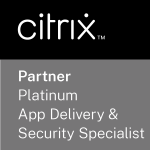Citrix NetScaler ADC pooled capacity licence
There’s an elephant in the room when it comes to ADC licences. Thinking about it, there are more like three and elephants and they are all based around cost. If you have purchased an ADC in the past, chances are you’ll recognise at least one of these scenarios…
Hardware load balancers are popular due to their capacity and in many instances, operational lines of demarcation. The problem is that hardware becomes obsolete and here’s the elephant, the licence key for the throughput of your ADC is tied to your hardware. When the tin is due for the bin, the software licence gets written off too and a new appliance with a software licence key needs to be purchased all over again. We’re happy to write off old hardware as it becomes obsolete and unreliable but why is it necessary to buy the software again?
How about this one, how big does the throughput capacity (licence key) need to be on your ADC? Chances are, the person answering that question has a reasonably good idea but doesn’t accurately know. It’s not their fault, user demands are unpredictable and SLAs need to keep up. The answer? Invest in a higher capacity licence key than the highest estimated throughput and make sure that there is enough ADC capacity to keep users happy. Good? Sometimes, although more often than not, we find appliances way over specified which means that organisations are spending money on capacity they don’t need. That’s not so good.
OK, so did you hear the story about the organisation that have been sold a stack of hardware ADCs a year or so ago and now have a business directive to move to a public or hybrid cloud offering? Me too and it’s becoming an increasingly common conversation. Very similar to the first problem, the licence keys on their hardware appliances can’t migrate to the cloud. The only option is to buy virtual appliance licences and leave last year’s hardware investment to gather dust, along with the software that lives on them. Bonkers.
Enter NetScaler ADC Pooled Licensing which ultimately allows ADC investment to be deployed when and where it’s need most. New for 2017, Citrix are going to allow organisations to purchase a total amount of capacity that can be carved up and deployed across the physical and virtual appliances in the estate. De-coupled from the appliances, this pooled licence entitlement avoids the hardware refresh issue, allows appliance sizing to be specified (and changed) in line with user demands and allows on prem licences to move to the cloud easily which reduces cloud friction and increases operational efficiency.
Still need high performance dedicated ADC hardware? Many will for the throughput, SSL performance or high density capacity that NetScaler hardware now offers like the 25000 series that allows up to 200Gb HTTP throughput from a 2 rack unit appliance. Good news, Citrix are now going to offer the 14xxx and 25xxx as a bare metal chassis ready for the service operator to apply the ideal capacity from the pooled licence entitlement. It’s the best of both worlds and better still, when the hardware is due for replacement, it won’t be necessary to buy the licences again so the hardware re-fresh cost come down too. Add in the usual TriScale message (scale up, in or out) and pooled licensing is starting to sound like a sensible option.
With a chunk of capacity spread across the ADCs deployed, there needs to be a centralised mechanism to manage the pooled licence entitlement. On prem data centre, private cloud or public could appliances all managed from one centralised console? That’ll be another potential NetScaler Management and Analytics System (N-MAS) use case then.
It’s not for everyone but there’s a significant amount of organisations that will find this commercially advantageous. Flexible, on demand licence provisioning that will help reduce capacity costs, improve RoI and get the elephants back in the wild where they belong.
© NetScaler Taylor
13th January 2017





